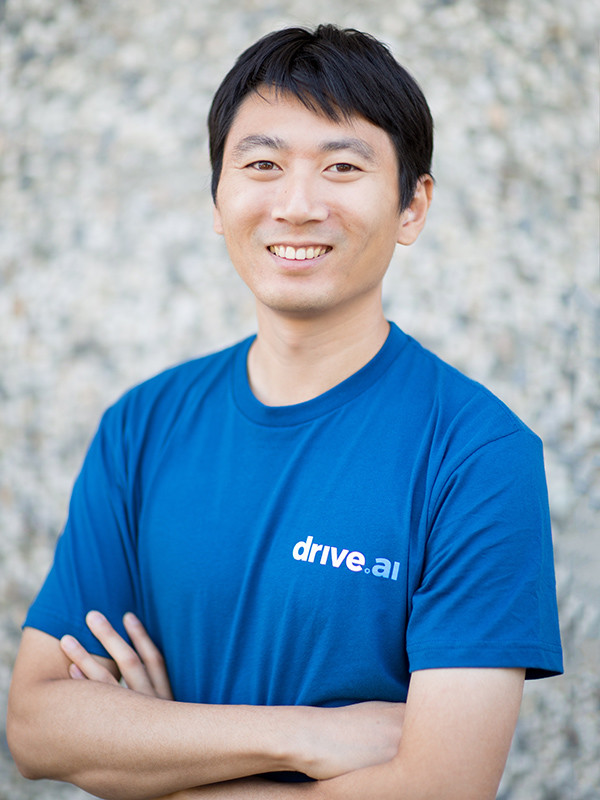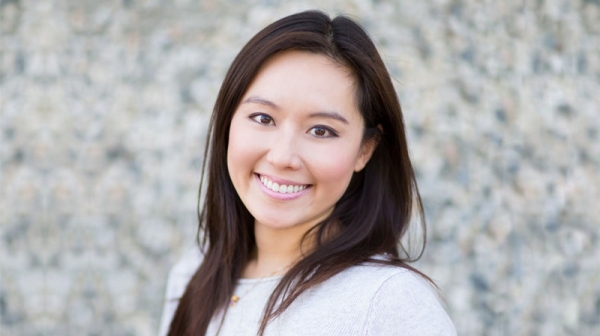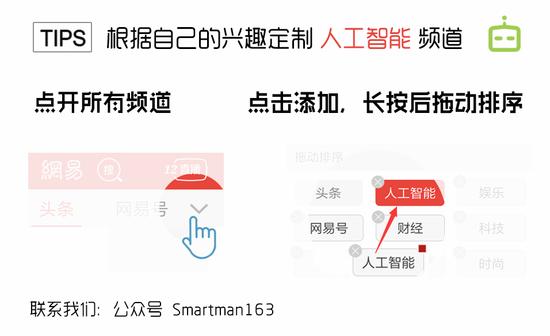(Original title: Famous for Wu Enda, we chatted with the investor and founder of driver team Drive.ai)

With the two popular labels of "Chinese Silicon Valley Venture Project" and "Wu Enda Wife", the automatic driving technology team Dirve.ai has received a lot of attention. Not long ago, the team announced that it had received 50 million US dollars of financing, and at the same time released heavy news. The former vice president of Baidu Wu Enda joined and served as a director, which made the technical team famous.
Titanium Media found Drive.ai's investor Ji Yuan Capital and Drive.ai's co-founder Wang Hao, restored some of the details of the investment, and chatted about the team's technical route and characteristics.
Eight core founding members are students of Wu Enda
Drive.ai was founded in April 2015, but the eight core founding members of the team came from Stanford University's artificial intelligence labs, both of whom were also students of Wu Enda. It was formed in 2014.
“It was later thought that a company should be established to operate and push the technology to practical applications more quickly, so there was Drive.ai.†The founding member of Drive.ai, Wang Tong, spoke about the origin of the establishment of the company.
After more than two years of development, Drive.ai's current team size is about 70. The company's positioning is a fully-stacked technology supplier that utilizes deep learning technology to provide SAE (American Automobile Engineering Institute) L4 level autopilot. Technical system solutions.
One of the key players in the industry who called this team a Chinese background is Wang Xi who was interviewed in this article. He was born in Wuxi, Jiangsu, China. He finished high school and undergraduate studies in Singapore before entering Stanford University.

Co-Founder of Drive.ai Wang Hao
Another Chinese background member is Wu Enda's wife, Carol Reiley (Carol Riley). He is a Chinese-American, and like Wang Hao, she is also one of the first founding members and also serves as Drive.ai. President.
Although Wu Enda’s aura is strong, Carol Reiley is also an out-and-out technical master. She also holds dual PhD degrees from Johns Hopkins University and has been a robotics expert since. , engaged in industrial and medical surgical robot application development.

Wu Enda's wife Carol Reiley (Carol Riley)
This also foreshadows its entry into the field of driverless technology. Driverless cars are also known as wheeled mobile robots. The predecessor of Google’s automated driving team is also an outdoor robot.
Regarding Wu En's meeting as a member of the Board of Directors of Drive.ai, the managing partner of Jiyuan Capital, and the surgeon of this investment Drive.ai, Li Hongxuan told Titanium Media that Wu Enda was a technical instructor on the technical route before and after the launch of Drive.ai. In the future, we will also provide more technical and talent support and cooperation.
The above-mentioned Chinese founding lineup has brought Drive.ai more attention to the Chinese media, but in fact, Drive.ai is to do a set of autopilot solutions for the global market.
Full-stack technology provider in a limited geographical environment
Looking through the official website of Drive.ai, you can see that the founding team members come from all over the world and have a variety of skin color of American, Indian, and Latino, which also explains Drive.ai's own global positioning.
Jiyuan Capital Management Partner Li Hongyi told Titanium Media,
"Drive.ai chose different combinations of investors in different stages. Among the early investors were Chinese investment institutions. This time they chose the first-tier funds of the United States, NEA and GGV. )) More considerations in these combinations are mainly internationalization."
Regarding the Chinese team, Wang Yi, co-founder of Dirve.ai, stated that China is a very big market. It is also very active in the development of driverless technology. It will surely deepen its layout in China, but the specific strategy and timetable will be The right time to disclose.
Jiyuan Capital’s Li Hongyi also told Titanium Media that if Drive.ai wants to go to the Chinese market, they will provide resources in China’s domestic market and government support.
In the application field, Drive.ai needs to be a fully-stacked technology supplier that is used in a limited geographical environment. Full stacking means that this set of automated driving solutions not only includes the driverless system of the vehicle, but also includes the interaction system between the vehicle and the pedestrian, and between the vehicle and the vehicle.燑/strong>
The limited geographical environment includes commercial centers, closed parks, and shared travel. This is also the direction that the current self-driving start-up team is considering, because the large-scale consumer market for passenger cars has very high requirements for vehicle class and cost, while the commercial applications in closed environments and limited environments are relatively low. low.
Li Hongyi said that she had seen the Cruise team under the income of General Motors at an early stage, and also saw the auto-pilot venture projects in Silicon Valley. He started to contact Drive.ai 6 months ago and did due diligence. It was precisely because she saw that Drive.ai was more technologically mature and its plans were closer to commercialization.
“The scene chosen by Drive.ai can be standardized, and it is a gradual process to optimize the technical difficulties in this scene. The most difficult of all scenes is the city’s driverless driving, and in the short term I feel that It will be a dedicated market."
In the direction of the product, Drive.ai apparently did not follow a forward development route that needed to “run with the hostâ€, which required following the development cycle of a model for 3-5 years. Drive.ai provided an automated driving solution. The rear-loading kit. "In theory, as long as there is a protocol interface, we can use our program to achieve automatic driving." Wang Hao said.
It is understood that Drive.ai has already cooperated with some logistics and freight companies, and cooperation with OEMs is also in progress.
Drive.ai's sensor configuration uses nine high-definition cameras, two millimeter-wave radars, and six Velodyne VLP16 lidars. The cost may not seem cheap, but Wang Hao told Titanium Media that it was only required for data collection. The "more comprehensive" considerations, when applied in practice, will also vary in cost reduction space depending on different scenarios.燑/strong>
"The existing configuration is mainly for a consideration of safety and stability." Wang Xi said, "Adding more sensors can collect more data. If this data is not used, it doesn't matter, but if you find something less Data, it will be troublesome to increase the sensor."
Deep learning and redundant design
It is understood that Drive.ai got the driverless drive test license of California in April last year. At present, the company has already invested in the road tests of Nissan, Audi and Ford three platforms.
Not long ago, Drive.ai released a video on the official website, showing that the company’s driverless vehicles are capable of autopilot in most cases, including extreme conditions such as nights, rain, or hail.
Wang Hao said that this is mainly because they do a good redundancy design on the sensor.
“Drive.ai is a model built after the fusion of multiple sensors. For example, in a rainy night scene, the camera may be subject to more restrictions, but the impact of the laser radar may be less, and the impact of the millimeter wave radar may be less. â€
Of course, the reason why Divive.ai can obtain the existing technological achievements is that it has made efficient use of the collected data.
Wang Hao introduced three major characteristics of their current data utilization:
First, the data collection vehicle is equipped with a very rich array of sensors. It collects image data, point cloud data, and radar data at the same time.
Second, there is an automated data processing system. For a large amount of collected data, they have a distributed database and backup mechanism.
Third, the semi-automatic data labeling system, since deep learning techniques are applied to all subsystems of the autopilot program, the workload of data labeling is naturally large, and Drive.ai also achieved semi-automated labeling work through deep learning. Then manually check some of the results.
“As far as I know, it takes about 800 hours for some teams in the industry to label one hour of data. The efficiency of our semi-automated system can be increased by more than ten times.†Wang Xi told Titanium Media.
Wang Hao also commented on the industry's phenomenon of “testing heroes on mileage theoryâ€. He believes that the bottleneck of automated driving is not how many test miles there are, but whether there are enough data types and environmental information, as well as high data rates. Save and mark efficiency.
Of course, the recognition ability of the deep learning system is a powerful tool, but it also faces the “black box†problem in which the calculation process is not interpreted. This model presents the calculation results in an end-to-end manner, but the actual decision-making process of input and output cannot be seen by people, nor can it be intuitively understood.
This is also the reason why most technology vendors choose traditional machine learning algorithms to do the sensing, because once the system has a fault or error, it can figure out why.
According to Wang Xi, Drive.ai uses a system split method for this feature of deep learning mode.
"At the time we were thinking about this problem when we chose this route. Now we are splitting the autopilot system into a number of subsystems and then applying deep learning technology to it, in different parts. It can be verified in different ways."
Moreover, the “black box†problem of deep learning is an industry issue, and academic circles are also actively discussing this topic. Drive.ai is also jointly addressing this issue in the academia and industry.
 燑br>
燑br>
ALL Kinds of 4G NB Vehicle GPS Tracker, there must be one which should meet your expectation.
ES810-CM the hot-sell with certificates of FCC,CE, PTCRB, Verizon, AT&T,T-Mobile, Sprint.
ES811 the waterproof version of ES810 with certificates of Verizon, Sprint.
ES840 the OBDII with certificates of FCC, Verizon, Sprint.
ES821 the smallest asset GPS Tracker with the certificates of FCC, CE,T ELEC, Verizon, T-Mobile, Sprint.
ES826 the long standby with the certificates of FCC, PTCRB, TELEC, AT&T, Verizon, Sprint.
ES410 the BG95(NB) version of ES810
ES420 the BG95(NB) version of ES821
ES430 the BG95(NB) version of ES826
NB vehicle GPS Trackers,NB car GPS Trackers,Waterproof car GPS Tracker,IP65 car GPS Tracker,OBDII NB vehicle GPS Trackers,Wireless NB GPS Trackers
eSky wireless Inc , https://www.eskygpsiot.com